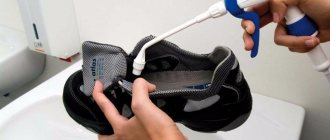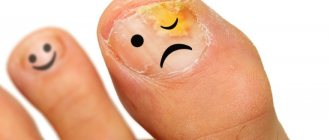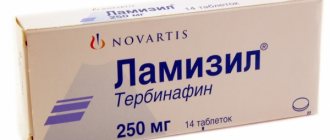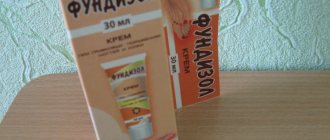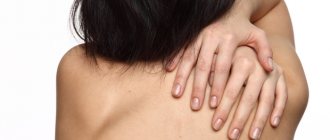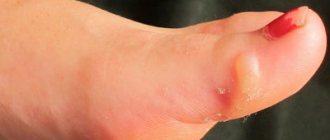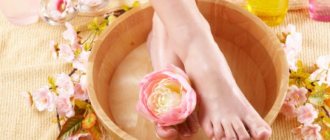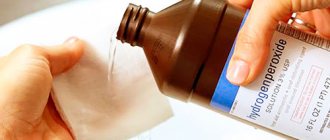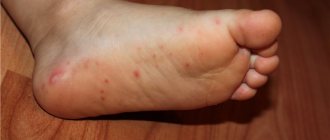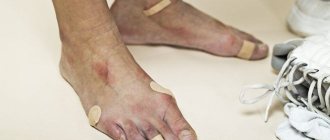Most of us think that nail fungus is just a cosmetic defect that can be easily cured with the help of commercial drugs. This is wrong! This disease is a serious pathology that can cause certain complications. Fungus can be treated with different means, medicinal and folk. Among all the methods, the method of treatment with hydrogen peroxide has proven itself well.
This treatment method is considered effective if the disease is not advanced. There are several recipes based on hydrogen peroxide.
What is toenail fungus
The medical name of the disease is onychomycosis. It is caused by dermatophyte fungi of the genus Trichophyton, less commonly Epidermophyton and pathogens of microsporia (ringworm). Fungal infection of the nail plate is not a cosmetic defect, it is a serious disease that has its own code according to the international classifier of diseases ICD-10. Onychomycosis can involve some areas of the nail plate or the entire nail (then doctors call it total). In Russia, a classification has been adopted based on the appearance of the nail (photos can be found online):
- normotrophic – stripes, spots while maintaining the normal shape and thickness of the nail;
- hypertrophic - the plate grows in breadth, changes color, loses its shine, thickens, and begins to crumble;
- onycholytic - the affected part dies and is torn away from the bed.
Onychomycosis is easy to catch, so it is very common: according to research, the disease occurs in approximately 27% of the European population. Routes of transmission: public locker rooms, baths, swimming pools. The older a person is, the higher the likelihood of infection. Patients with psoriasis and diabetes are at risk; the infection “clings” to them much more readily.
Causes
For the existence of a fungus, the habitat is important; conditions must be created.
There are 5 factors that influenced its appearance.
- Work in hazardous production conditions (metallurgical, chemical).
- People with other diseases (diabetes mellitus, malignant tumor).
- Presence of chronic diseases.
- Weakened immunity.
- Improper foot care, non-compliance with hygiene rules (tight, poor-quality shoes, using someone else's slippers or towel).
Moreover, the reasons for the advanced form include deviation from the treatment regimen. Thus, you can only harm yourself.
Important! If treatment is not started in a timely manner, chronic diseases may worsen due to decreased immunity.
Treatment of nail fungus with hydrogen peroxide
Fungal infection should be distinguished from non-fungal lesions of the nail plate. A dermatologist can do this using an analysis that is carried out in hospitals and private laboratories. Based on this, you can choose the right drug from a variety of remedies designed to cure the fungus, both pharmaceutical and folk. Treatment of toenail fungus with hydrogen peroxide deserves special attention.
An ordinary antiseptic that everyone has at home can surprise you with the breadth of its spectrum of action. In addition to treating wounds, it can be used to disinfect surfaces in the home, whiten teeth, and dissolve ear plugs. Treatment of fungus on toenails with hydrogen peroxide is possible due to its ability to soften and separate necrotic areas from healthy tissue.
Symptoms
At the beginning of the development of the disease, many do not pay attention to nail fungus and take it lightly. Some people expect it to go away on its own. Meanwhile, mycosis “spreads” over healthy areas of the skin and develops into a complicated form. Fungus may even occur between the fingers, on the fingernails and on the scalp.
What happens to the nail when the form is neglected? The main symptoms are redness, itching, peeling, pain between the fingers and in the skin fold. With this form, more than one nail is affected, which turns blue and yellow. The nail plate thickens, becomes uneven, changes shape, and in some cases is completely destroyed.
Important! The fungus can penetrate the skin, blood and internal organs, which will lead to serious illnesses.
Method with vinegar
An acidic environment is detrimental to mushrooms, so in many folk recipes, advanced lesions are treated with a vinegar solution. There are several ways to use vinegar and peroxide for toenail fungus:
- A compress made from 3% peroxide and table vinegar diluted in equal proportions. A cotton swab is generously soaked with a mixture with a characteristic odor, which should be applied to the sore nail. Keep the compress until the hissing stops. Repeat every morning and evening for a month.
- Paste of vinegar and soda. You need to take two tablespoons each of baking soda and water, and one each of table vinegar and peroxide. The resulting paste should be applied to the affected nails 2 times a day, left for 15-20 minutes, and then rinsed off.
- Foot baths in vinegar water with the addition of hydrogen peroxide. The concentration of peroxide and vinegar per liter of warm water is two tablespoons. Such baths for 15 minutes twice a week will prevent relapses.
Tips to help you recover from fungus faster
Before using any prescription or treatment method, you must:
- go over bedding, linen, socks with a hot iron;
- treat the inside of the shoes with a 40% acetic acid solution, then place them in a plastic bag and leave them in the freezer overnight.
These manipulations should be performed at the beginning of treatment and at its end. If the treatment is long-term, then this should be done monthly.
Treatment of nail fungus with hydrogen peroxide according to Neumyvakin
Ivan Pavlovich Neumyvakin is a doctor, the author of several unconventional methods of healing the body, including using hydrogen peroxide. This antiseptic, Neumyvakin believes, is capable of killing pathogenic microorganisms in the intestinal microflora and treating serious systemic diseases in humans. It is recommended to use peroxide according to his method both internally and externally.
To treat toenail fungus with hydrogen peroxide, the author suggests using it externally. Apply cotton swabs soaked in peroxide to the nails steamed with a warm solution of soda (two tablespoons diluted in a liter of water) and leave for 30 minutes. Repeat every other day until symptoms go away. According to some reviews, even severely advanced fungus on the lower extremities can be cured using this method.
- Eggplants with tomatoes and garlic in the oven - recipes for the table and for the winter
- Why do hair and ends split? Split ends treatment
- Sorrel soup: recipes with photos
Reviews
Reviews of the treatment of fungus with peroxide indicate that microorganisms do not become resistant to the drug. Peroxide treatments and the use of antifungal agents will kill the pathogen cells.
Oksana, 28 years old. Peroxide helped me with nail fungus. After trying several pharmaceutical products, I decided not to spend any more money and start being treated with traditional methods. Of course, not right away, but the result pleased me. I came to the conclusion that the infected nail should not be filed down, but carefully cut off with a machine after steaming.
Christina, 32 years old. Cured a fungus that was 15 years old. My feet itched terribly and the skin peeled off. After a month of treatment with peroxide and Lamisil, we managed to get rid of the problem. Now the skin is smooth. Every day I steamed my feet and cleaned them with a pumice stone.
Katya, 31 years old. I used peroxide in combination with kombucha. I treated my legs every other day. The situation has improved noticeably in 2 weeks, and I am now continuing treatment. I make baths with peroxide, add a little chamomile infusion, which disinfects the wounds, since I also have cracks on my feet.
Peroxide baths
Traditional medicine considers the treatment of toenail fungus with hydrogen peroxide as an adjuvant. Dermatologists recommend a technology that consists of complex treatment: first use peroxide, it helps soften the nails, and then apply antifungal drugs. Dissolve 50 ml of the product in a liter of warm water and lower your feet into the bath. The duration of the procedure is a quarter of an hour. The nails are then trimmed and the product prescribed by the doctor is applied. The procedure does not cause discomfort. You can apply a lotion to the affected nail.
Precautions and contraindications
The use of hydrogen peroxide rarely causes side effects. Still, during treatment you need to take some precautions:
- If you have dry skin or open wounds, you should not take baths or make compresses with peroxide.
- Before using the drug for the first time, you need to test for hypersensitivity to the components of the product.
- If a burning sensation or severe hyperemia occurs, you must stop the procedure and rinse the skin with plenty of water.
- When treating severe forms of fungus, you should not refuse pharmaceutical medications prescribed by your doctor.
- It is prohibited to change the dosage of active substances.
Prevention of re-infection
In order to prevent the fungus from returning, during treatment it is necessary to pay attention to the disinfection of shoes and socks, otherwise constant self-infection will occur. There are other simple rules for preventing relapses:
- Wear shoes according to size and season. It is advisable to give preference to natural materials (leather, suede).
- It is important to let your shoes dry after use, preferably 24 hours.
- In the pool, sauna, and gym, individual rubber slippers will protect you from fungal spores.
- Pedicures and manicures should not be done where there is no confidence in the reliable disinfection of instruments in the oven.
- Wipe your feet dry after washing; moisture in the spaces between the toes contributes to the spread of infection.
- Strengthen general immunity - it affects susceptibility to disease.
Preventive measures
Following simple hygiene rules helps protect yourself from fungal infection. According to them:
- You cannot wear someone else’s shoes on your bare feet;
- You can try on new clothes in a store only by wearing a sock;
- when visiting swimming pools and baths, you should take rubber slippers with you;
- After taking a shower after swimming in the pool, it is important to wipe your feet dry, especially the skin between the toes;
- It is necessary to ensure that shoes are always dry and change socks regularly;
- you need to control so that the nail does not grow into the skin;
- Cracks that appear on the fingers and feet should be healed in a timely manner.
General strengthening measures that support the immune system (physical activity, hardening, proper nutrition) and control of chronic diseases will also help protect nails from possible infection by harmful microorganisms.
Therapeutic rules
Neumyvakin’s method has received a lot of positive feedback from grateful patients, however, in order for the treatment effect to be 100%, certain rules must be followed.
- Before using peroxide, be sure to clean and remove the affected part of the nail; to do this, steam your feet (or hands), then cut off the protruding part of the plate as much as possible, and clean the remaining surface with a nail file.
- During therapy, use only personal hygiene products and manicure accessories to avoid infection of healthy family members.
- In everyday life, try to touch the affected areas of the body less often, this will prevent the spread of infection.
- With onychomycosis of the feet, regular disinfection of shoes is required - every time after wearing shoes, treat their inner surface with peroxide.
- The affected nail should not be covered with decorative varnish.
- Perform all procedures regularly until complete recovery. After just a few manipulations, you will feel relief, but you cannot stop therapy - fungal microorganisms, under the influence of drugs, are able to temporarily reduce their activity and, at any opportunity, begin to attack again.
- If you have onychomycosis of your hands, it is not recommended to come into contact with detergents, so do not forget to wear protective rubber gloves.
By following these recommendations, you can overcome the fungus in literally 1 month of regular procedures. Professor Neumyvakin is confident that the atomic oxygen contained in peroxide will help get rid of the problem forever.
Laser therapy
Treatment of onychomycosis is complicated by the fact that these fungi live in dead tissue, and obtaining drugs in these areas is problematic. Since most of these infections are relatively superficial, it would seem that topical treatments should work well. But this is not true, because the nail is relatively impenetrable. In such cases, laser technology will help get rid of the fungus.
It was in this area that the use of lasers was involved. Of course, lasers are a very modern, technologically advanced approach to treating various human diseases. Lasers create coherent light energy of sufficient strength and specific wavelength, which when projected into tissue is differentially absorbed by the target material, creating heat and therefore destroying the tissue.
Medical lasers are fairly expensive devices, so treatments with these machines typically require fairly high fees to recoup the original purchase price of the equipment. It is theorized that some lasers may work by heating the nail enough to discourage fungal infections. Another approach to laser nail treatment uses laser chipping to burn holes into the nail plate through which topical antifungal medications can effectively penetrate.
Contraindications for the use of peroxide
[poller_master poll_id='1′ extra_class='opros']
It must be remembered that a solution in high concentration can cause burns. Therefore, a 6% solution can be used for baths, and no more than 3% for compresses and lotions.
Long-term use of the drug affects the condition of the skin. People with a dry type of epidermis are not recommended to treat nail fungus with peroxide for a long time, as this can cause skin aging.
The main effect of the solution is to disinfect the affected area. Treatment with this remedy allows you to disinfect the place where the infection is progressing. This effect creates an unfavorable environment for the development of bacteria and inhibits the division of nail fungus cells.
Rules of treatment for Neumyvakin
According to Professor Neumyvakin’s rules, undiluted hydrogen peroxide should not be used for therapy. The prescribed dosage must be followed to avoid unwanted results. 3% peroxide concentrate can only be used as a lotion on infected areas. For the same reason, the drug should not be taken orally by women during pregnancy and breastfeeding, as well as by minors.
Peroxide should be taken orally 2 hours after meals and 40 minutes before the next meal. It is not recommended to combine the simultaneous use of the drug with other drugs, but should take a half-hour interval. If unpleasant sensations occur during therapy, it is necessary to interrupt treatment until the negative symptoms disappear.
All items used during procedures should be thoroughly washed with a disinfectant solution to avoid relapses.
For preventive and health purposes, according to Neumyvakin’s method, it is possible to internally use a solution of hydrogen peroxide in a gradually increasing dosage from 1 to 10 drops. The professor also advises practicing the fractional method of eating multiple times in small portions. Drinking liquid during meals is not recommended due to the dilution of gastric enzymes responsible for digesting food, and as a result, undigested food causes excessive slagging in the body.
Is it possible to treat an advanced form?
If onychomycosis is progressive, provokes distortion of the nail plate and deep damage to the nail bed, Neumyvakin’s technique may be ineffective. This is due to the need to use complex antiprotozoal agents, antibiotics and immunostimulants.
However, the technique may well be combined with drug therapy. Doctors prescribe steaming the legs with the addition of soda, which improves the penetration of the main drug into the site of infection. Hydrogen peroxide can be used to disinfect the nail during the day, as well as after using baths. Oral consumption has a beneficial effect on the functioning of the immune system, which will enhance the effect of immunostimulants.
What other recipes are there?
Baths.
The simplest recipe for preparing a medicinal bath is to mix plain water and hydrogen peroxide. You need water at a temperature of about 40 degrees, to which add 2 tablespoons (for every liter) of the medicinal solution. The legs are held for 10 minutes or more, depending on the severity of the disease. Positive changes will be noticeable within 5 days, but treatment should not be stopped until complete recovery.
"Effervescent" liquid.
This unusual medicine is prepared as follows: 3% hydrogen peroxide and 3% vinegar are mixed in a ratio of 1 to 1 - the liquid is ready. Then it must be applied to the affected area and left until it stops hissing.
The next step is immersion in the bath. It must be prepared in advance. Add a small amount of laundry bleach to the water. After the activities described above, the feet are immersed in the bath. They remain there for 30 to 120 seconds, after which they are wiped dry with a towel.
The last is the treatment of the lower extremities with a substance obtained by mixing tea tree essential oil and Vaseline (in half) . Then you need to put on cotton socks. The procedure is repeated daily for a week.
Types and signs of fungus
Even a small nuisance can turn into a big problem when the onset of the disease is missed. A striking example is onychomycosis, a fungal nail disease.
The first signs of infection depend on the type of pathogen:
- Dermatophytes - provoke yellow spots, stripes on the sides of the nail plate, causing itching and peeling.
- Yeast fungi cause redness of the skin, scales appear along the edges of the nail, and the plate becomes thinner.
- Mold fungi - settle on the surface of the sore finger, changing its color from pale yellow to black.
Based on the location of the disease, four forms are determined:
- distal (when the plate is affected from the side of the free edge),
- lateral (changes in the sides of the nail),
- proximal (the parasite appears on the posterior fold of the nail),
- total (here the entire plate has been changed).
The disease is divided into three types, with characteristic symptoms:
- the color of the plate changes, stripes and inclusions appear, the thickness of the nail plate remains normal, called “normotrophic”,
- the shine disappears, the color changes, the plate thickens, it is called “hypertrophic”,
- part of the affected nail is rejected - an atrophic type of disease.
Briefly about onychomycosis
This is what doctors call a disease that people are accustomed to calling a fungus. Its causative agents are fungal spores. There are about 500 species. They are very tenacious. They can stay with skin particles for a long time on a warm and damp surface, then, when they get on human nails and skin, they quickly multiply and become active. The most common places for fungal infections are baths, gyms, saunas, and swimming pools. Therefore, after visiting them, experts advise more careful hygiene.
The first sign of a fungal infection in your nails is a change in their color. They turn yellow, itching and redness begin at the edges. Further, the nail plates can change shape and crack if health measures are not taken. And later, fungal spores can penetrate the blood, which will lead to a weakening of the general immune system. Getting rid of a spread fungus is much more difficult than getting rid of a viral infection.
Today there are several ways to treat the problem. And the most popular of them is laser therapy. It is very effective, but the cost of the procedure is not affordable for everyone.
It is much cheaper to be treated with pharmaceutical drugs. The method requires patience and time. It is necessary that the medications be prescribed by a doctor and monitor the therapy process. It is worth noting that many systemic drugs against fungus, also called antimycotics, have a toxic effect. This means that they kill the fungus and have a negative effect on the human liver and the entire body.
Therefore, it is safer to use folk remedies. They will be effective at the initial stage of development of the disease.
Internal use of peroxide
We have already mentioned that before using a homemade “elixir” (peroxide), it is necessary to prepare the affected surface - steam your feet or hands and remove part of the damaged nail.
Neumyvakin recommends making a soda bath (by the way, the professor also uses soda as a medicine):
- Heat 2 liters of water (to a comfortable temperature),
- Pour a tablespoon of baking soda into it, stir (if desired, you can add the same amount of grated tar soap),
- Dip feet (hands), hold for 20 minutes,
- Then dry and proceed to remove damaged nail plates.
After completing the preparatory procedures, you can begin treatment with peroxide.
Soak a cotton swab well in peroxide and apply it to the affected surface. You need to secure the top with polyethylene, and then apply a bandage. The compress should remain on the finger for at least 1 hour. If desired or possible, leave the medication to work overnight.
After removing the compress, rinse your feet and wipe dry. Then during the day (4-5 times) drip 3 drops of peroxide onto the cuticle area, nail and under the plate itself (try to get the product onto the entire affected surface). Put on socks and shoes after the medicine is absorbed.
Daily, regular implementation of all procedures will allow you to get rid of onychomycosis in literally 1 month. By the way, the duration of therapy with specialized medications is 2-3 months at the initial stage and from six months with an advanced form of the fungus.
Treatment is carried out according to the following scheme (the medicine is taken three times a day, the course is 10 days):
- 1 day – at one time, dilute 1 drop of 3% peroxide in 50 ml of water, drink before meals (20 minutes),
- Day 2 – add 2 drops of 3% peroxide to the water,
- Day 3 – you need to add 3 drops and so on.
Every day you increase the amount of peroxide by 1 drop. After 10 days of such treatment, a break is necessary. After resting for 5 days, take the course again, but immediately start with the maximum dosage, that is, 10 drops per 50 ml of water three times a day, course for 10 days.
If unpleasant symptoms occur, reduce the dosage or take a break again.
https://youtube.com/watch?v=OBoscnGdalw
bezgribka.com
The cost of peroxide 3% (40 ml) is from 8 rubles.
The professor warns that it is impossible to exceed the dose (30-40 drops). It is worth abandoning the idea of increasing the amount of solution consumed orally. This will not increase efficiency, it will only harm your health.
The famous scientist gave several tips, following which will make it possible to get rid of the fungus without unpleasant consequences:
Only 3% medicine is suitable for therapy, other concentrations will cause irritation or burns,
- Procedures must be carried out regularly,
- After using peroxide, the limbs are washed with plenty of water. The soaked dirt must be washed off to improve the flow of oxygen to the affected nails, as well as the penetration of active components into the plate,
- Breaks in treatment are required if it is carried out internally. Usually three days are enough, then therapy is resumed,
- When using the product externally, slight discomfort and redness are possible, but it quickly disappears,
- It is also better for family members to use hydrogen peroxide as a preventative measure.
You also need to take into account the following rules:
- During treatment, you must use only your own things (manicure accessories, towel, etc.),
- It is advisable not to touch the infected area to prevent the infection from spreading further,
- It is imperative to disinfect your shoes by treating them with peroxide,
- The affected plate must not be varnished,
- The procedures are repeated until the disease subsides. The effect is noticeable after several uses; treatment of the fungus with hydrogen peroxide cannot be stopped.
- If onychomycosis affects your hands, contact with various detergents is contraindicated. Wear gloves before washing dishes, floors, etc.
Important!
Having overcome the disease once, there is a chance of becoming infected with it again, so do not forget about the rules of protection and prevention. It is forbidden to wear someone else's shoes and use hygiene products; you must have rubber slippers in swimming pools and saunas; any skin lesions must be immediately treated with an antiseptic.

